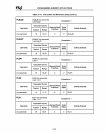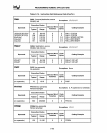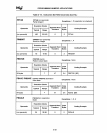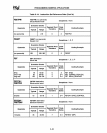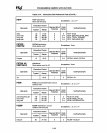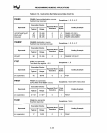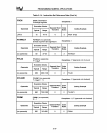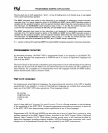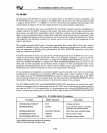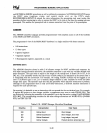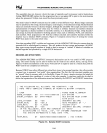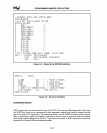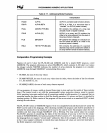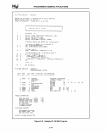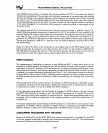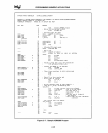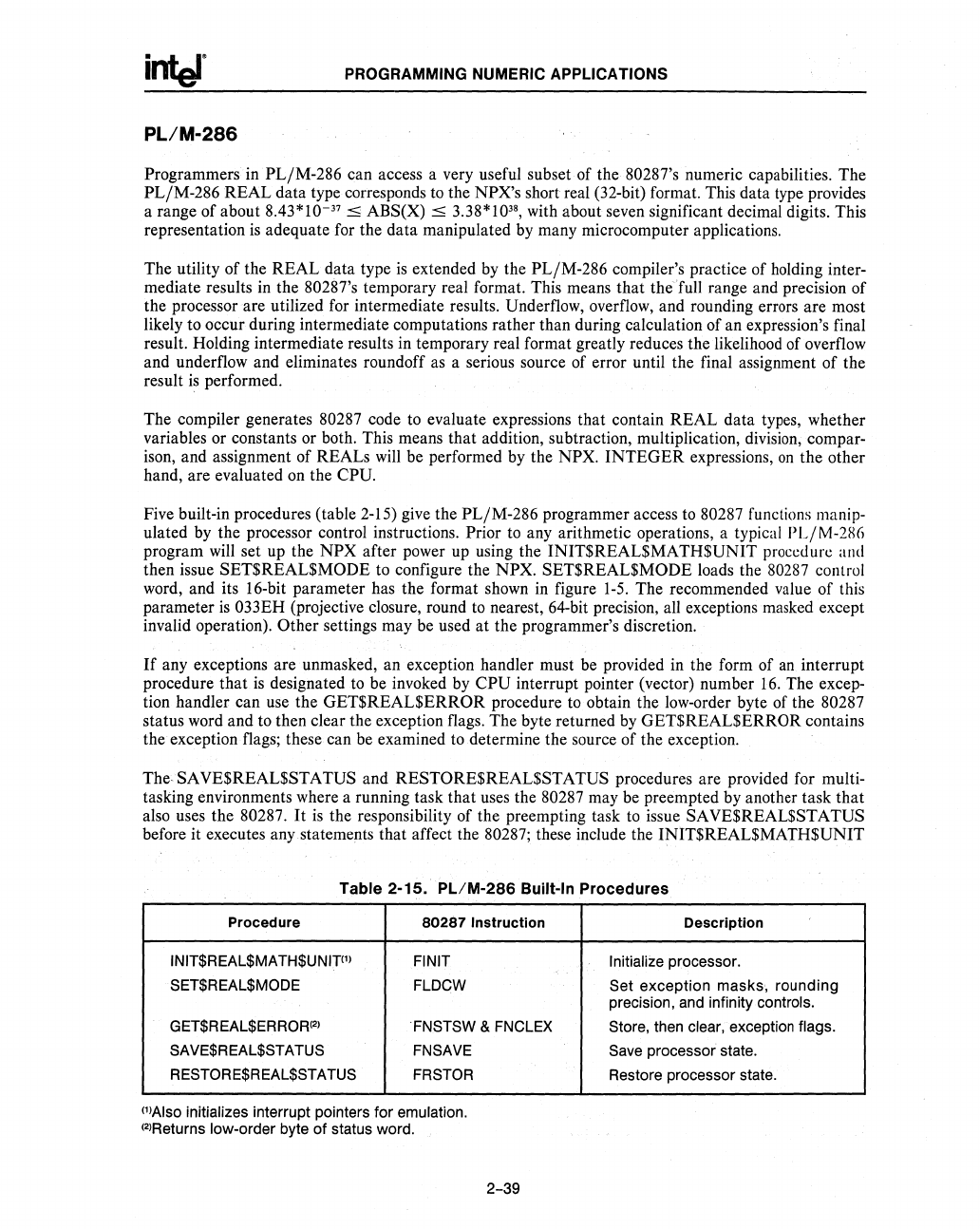
PROGRAMMING NUMERIC APPLICATIONS
PL/M-286
ProgrammersinPLfM-286
can access a very useful subset of the 80287's numeric capabilities. The
PLfM-286
REAL
data type corresponds to the NPX's short real (32-bit) format. This data type provides
a range
of
about 8.43*10-
37
~
ABS(X)
:$
3.38*10
38
,
with about seven significant decimal digits. This
representation
is
adequate for the data manipulated by many microcomputer applications.
The utility
of
the
REAL
data type
is
extended by the PLfM-286 compiler's practice
of
holding inter-
mediate results in the 80287's temporary real format. This means
that
the-'full range and precision of
the processor are utilized for intermediate results. Underflow, overflow, and rounding errors are most
likely to occur during intermediate computations rather than during calculation
of
an expression's final
result. Holding intermediate results in temporary real format greatly reduces the likelihood of overflow
and underflow and eliminates roundoff as a serious source of error until the final assignment
of
the
result
is
performed.
The compiler generates 80287 code to evaluate expressions that contain REAL data types, whether
variables or constants or both. This means
that
addition, subtraction, multiplication, division, compar-
ison, and assignment of REALs will be performed by the
NPX.
INTEGER
expressions,
on
the other
hand, are evaluated
on
the CPU.
Five built-in procedures (table 2-15) give the PLfM-286 programmer access to 80287 functions manip-
ulated by the processor control instructions. Prior to any arithmetic operations, a typical
PLfM-286
program will set up the
NPX
after power up using the
INIT$REAL$MATH$UNIT
procedure and
then issue SET$REAL$MODE to configure the NPX. SET$REAL$MODE loads the 80287 control
word, and its 16-bit parameter has the format shown in figure
1-5.
The recommended value
of
this
parameter
is
033EH (projective closure, round
to
nearest, 64-bit precision, all exceptions masked except
invalid operation). Other settings may be used at the programmer's discretion.
If
any exceptions are unmasked, an exception handler must be provided in the form of
an
interrupt
procedure
that
is
designated to be invoked by
CPU
interrupt pointer (vector) number
16.
The excep-
tion handler can use the
GET$REAL$ERROR
procedure to obtain the low-order byte of the 80287
status word and to then clear the exception flags. The byte returned by GET$REAL$ERROR contains
the exception flags; these can be examined to determine the source
of
the exception.
TheSAVE$REAL$STATUS
and RESTORE$REAL$STATUS procedures are provided for multi-
tasking environments where a running task
that
uses the 80287 may be preempted by another task
that
also uses the 80287.
It
is
the responsibility of the preempting task to issue
SAVE$REAUSTATUS
before it executes any statements that affect the 80287; these include the INIT$REAL$MATH$UNIT
Table 2-15.
PLlM-286
Built-In Procedures
Procedure
80287
Instruction
INIT$REAL$MATH$UNIT(1)
FINIT
SET$REAL$MODE FLDCW
GET$REAL$ERROR(2)
FNSTSW
& FNCLEX
SAVE$REAL$STATUS
FNSAVE
RESTORE$REAL$STATUS
FRSTOR
(1)Also
initializes interrupt pOinters
for
emulation.
(')Returns low-order byte
of
status word.
2-39
Description
Initialize processor.
Set
exception
masks,
rounding
preCision, and infinity controls.
Store, then clear, exception flags.
Save processor state.
Restore processor state.



